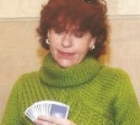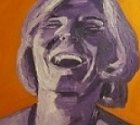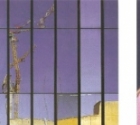-1451382570.jpg)
Alex & Rahel Shaked.
Alex Shaked, 82, began creating his wonderful scenes from the village of his youth only four years ago. Using mainly clay he has produced an array of characters and scenes all taken from his childhood memories of the small village in Eastern Europe where he grew up.
Everything down to the smallest detail is authentic and created from memory. Here is the village shoemaker bent over his work table strewn with scraps of leather while two pairs of finished boots sit on the stone floor. Here is the woman doing her laundry with a wooden 'dolly', here the butter making turning a wooden churn, a rabbi blessing the moon, a married couple doing a 'mitzvatanz' a klezmer band.
Although it is only four years since he began to recreate his 'shtetl' bringing back the lost world of his village. Vishni Bystra, which at various times was in Czechoslovakia, Hungary or Poland depending on which country was in power, he has always been blessed with artistic talent whittling away at pieces of olive wood and turning them into exquisite birds and animals in his spare time.
After he suffered a stroke ten years ago and was confined to a wheelchair for several months he took a course in sculpture at the cultural center in Kfar Saba where he lives with his wife of 53 years, Rahel, and began producing busts and other large pieces of sculpture. His physiotherapist suggested that he should try using his hands to make finer details; the actual molding of the clay would be therapeutic.
First he made small animals for his grandchildren. He had no experience doing faces at all. Then one day he came across a book by a woman of eighty who had recreated her childhood memories and he wondered if he might not be able to do the same.
He began to work on his scenes from childhood and to date has produced about fifty vignettes of his youth. He has had one major exhibition in Rishon LeZion and more are planned. He insists that he is not looking for fame and glory; he just wants to show what his vanished world looked like and to ensure that it will endure through his art.
The road he has traveled begins in 1925 when he was born in Vishni Bystra, a small undeveloped village in the Carpathian Mountains which was home to about 70 Jewish families, all orthodox.
"There was no running water, no electricity – no-one had a radio but occasionally someone would bring a newspaper from the town and read it aloud to the old men sitting around him in a circle."
When he was ten his mother died and he was sent to study in a yeshiva in another town. In 1944 the Jews of the village, which at this point belonged to Hungary, were rounded up and murdered.
"I wanted to go home and say goodbye to my family but my rabbi advised against it. He said that although it was important to honor one's parents, it was not safe to travel back at that time."
He was captured anyway and spent a year in five different concentration camps including Auschwitz and is the sole survivor in his family.
.jpg)
After the war he was in Marseilles waiting to come to Israel as part of 'Gahal' (Gius Huts La'arets).
"They trained us for the War of Liberation which we knew would start the minute Ben Gurion declared the State," he recalls. "We had one pistol for 30 people".
On arrival Alex joined the army and stayed for seven years. His artistic talent was instantly recognized and after his release he began to work as a graphic artist in a packing company which he did until retiring 17 years ago. He used to whittle his flamingoes and kangaroos while sitting on the bus on his way to work every day using the pieces of olive wood that were thrown out as scrap in the factory. He built houses out of cardboard and made Purim costumes for his children and grandchildren.
He never talked about his war-time experiences. But then the Holocaust deniers began their insidious work and became more and more prominent and he felt the time had come to speak out. He is now willing to talk about the things he suppressed for years.
In his pleasant apartment in Kfar-Saba, he shows me his 'studio' – a plastic bag filled with a variety of home-made tools, a few knives, a spray bottle of water and clay. "I work on the kitchen table," he says. Firing is done at the cultural center where he learnt the basics of his art.
Last year he took his wife and two daughters on a visit to his roots and his Israeli-born wife and children were delighted to discover that the house he had lived in as a child was still standing and was exactly as he had remembered it down to the smallest detail.
 (350x156)-1452331757.jpg) Magazine Volunteers on a Summer's Evening
Magazine Volunteers on a Summer's Evening (350x246)-1452331346.jpg) ESRA Tel Aviv in the Community
ESRA Tel Aviv in the Community Honoring our Distributors of over 25 years
Honoring our Distributors of over 25 years Bridge the right way
Bridge the right way A Bit of Humor on Food
A Bit of Humor on Food ESRA Photo enthusiasts meet monthly
ESRA Photo enthusiasts meet monthly Gloria Deutsch
Gloria Deutsch